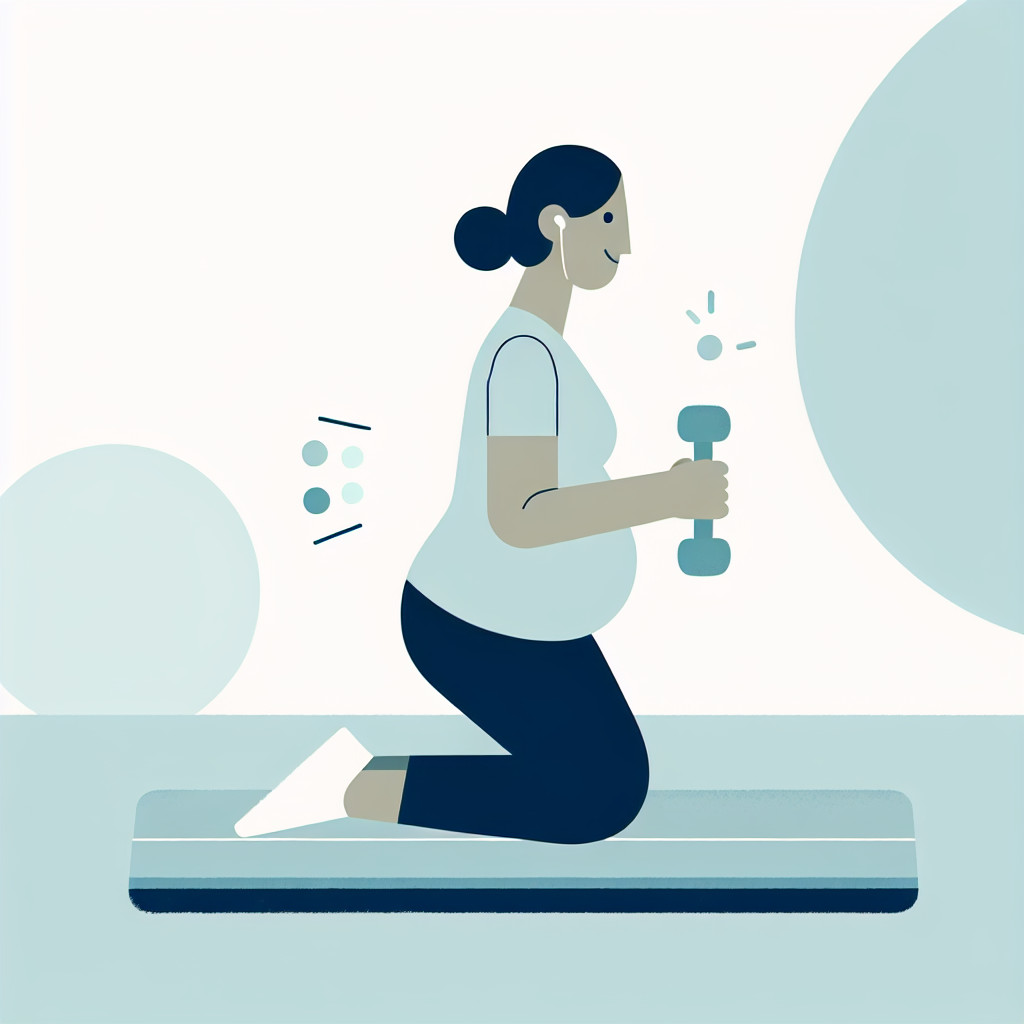When you’re expecting, your body goes through a whirlwind of changes, and staying in shape can make a huge difference for you and your little one. Fitness during pregnancy isn’t just about keeping those extra pounds at bay; it’s about preparing your body for the marathon of childbirth and recovery. Strength training, in particular, is a fantastic way to boost your muscle strength, reduce aches and pains, and enhance your overall well-being. Let’s not forget, it does wonders for your mood and stamina too. With the right approach, you can safely embark on a pregnancy fitness journey that keeps you and your baby healthy.
Understanding Pregnancy Fitness
Pregnancy totally transforms your body, from increased blood flow to shifting joints. It’s paramount to grasp how these changes impact physical activity and how to adapt your workouts accordingly. Embracing safe exercise principles ensures you’re taking care of two. Expectant mothers often battle with sorting fact from fiction when it comes to prenatal workouts—don’t let myths deter you; the truth is, exercise can be incredibly beneficial if done correctly during pregnancy.

Getting Started with Strength Training
Diving into strength training begins with a green light from your healthcare provider. Once you get the go-ahead, setting goals that are achievable and tailored to your pregnancy journey is key. You don’t need a full-blown home gym; just a few pieces of basic equipment and some dedicated space can do the trick. It’s all about keeping you and your baby safe while building strength.
Tailored Strength Training Exercises for Each Trimester
Each trimester brings its own set of challenges and physical changes, necessitating a tweak in your workouts. During the first trimester, you can lay the foundations for your pregnancy fitness. As you cruise into the second trimester, your growing belly requires adaptability and modifications to traditional exercises. By the third trimester, the focus shifts to maintaining muscle tone and preparing your body for the big day.
Core Strengthening and Stability During Pregnancy
- The core is the centerpiece of a strong body, and that’s hugely true during pregnancy.
- Exploring safe yet effective core exercises will help you stay stable as your center of gravity shifts.
- Avoiding overexertion and pressure on your belly is essential while working on your core stability.
Upper and Lower Body Strength Workouts
A balanced strength training regimen targets both your upper and lower body. Strengthening your shoulders, chest, and arms keeps you ready for carrying your little one once they arrive, while working on your glutes, thighs, and calves supports your changing body and prevents strain on your back. Balancing active workouts with periods of rest is vital—remember, you’re working out for two!
Flexibility and Mobility: Complementing Strength Training
Remaining flexible and limber can be a saving grace during pregnancy. Incorporating stretches and mobility exercises in your routine enhances the benefits of strength training. This aspect of fitness is not to be overlooked; it can ease delivery and speed up recovery. Regular stretching also keeps those pesky pregnancy cramps at bay.
Nutrition and Hydration for Pregnancy Strength Training
When it comes to fueling your body for pregnancy fitness, think nutrient-dense meals and ample hydration. Your body’s needs soar when you’re expecting, so it’s crucial to up your intake of vitamins and minerals. Water becomes even more of a best friend during this period; it’s essential for both you and your bump. And while supplements can be beneficial, it’s best to chat with your doc before popping any pills.
Motivation and Mental Well-being
Let’s be honest, keeping motivated can be tough with a belly that’s ever-expanding. But believe it or not, sticking to a fitness routine can help manage both mood swings and energy dips. With pregnancy comes a cocktail of emotions and potential concerns over body image; staying active not only boosts your spirits but also helps you embrace the incredible changes happening to your physique.
Tips for Monitoring Your Progress
Tracking your progress can be a source of great motivation, but it’s important to do it safely. Logging your workouts and how you feel can guide necessary tweaks to your routine. As your pregnancy progresses, being attuned to your body’s signals is vital—knowing when to dial it back can prevent overexertion and keep both you and your baby out of harm’s way.
Post-Pregnancy Strength Training
Once your bundle of joy arrives, you may be itching to get back to your pre-pregnancy workouts. Take it slow and steady; rebuilding strength and stamina after childbirth is a gradual process. And if you choose to breastfeed, consider how your nutrition and hydration needs will further adjust to sustain both your recovery and your baby’s growth.
Frequently Asked Questions on Pregnancy Fitness
Can strength training cause harm to my baby?
Not at all, as long as it’s done safely. Strength training can actually support a healthy pregnancy by boosting your stamina and mood, reducing gestational diabetes risk, and aiding in labor and recovery.
What exercises should I avoid during pregnancy?
You’ll want to steer clear of exercises that involve lying flat on your back after the first trimester, activities with a high risk of falling, and anything that requires extensive jumping or bouncing. Always check with your healthcare provider for personalized advice.
How often should I strength train?
Aim for 2-3 sessions per week, with each session being around 20-30 minutes. This keeps you active without overdoing it. As your pregnancy progresses, you might need to adjust the frequency and duration based on how you feel.
How do I know if I’m overexerting myself?
Listen to your body—shortness of breath, dizziness, or discomfort beyond normal muscle fatigue are all red flags. Maintain the ability to carry on a conversation while exercising, and don’t hesitate to take more frequent breaks or lower the intensity if needed.
